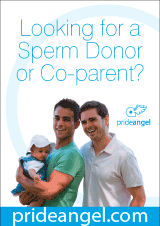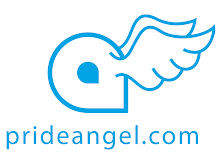Monday, 10 December 2012
Sperm donor steps up to be known by donor offspring
Sperm donor in Australia who donated in 1979 wants to meet his donor conceived children. PETER Liston has led a full life. He is a father of three, grandfather of two, and has travelled the world extensively as a professional gambler, making millions along the way. However, there is one thing Mr Liston would like to do before he dies: meet the children he helped create as a sperm donor in 1979.
As a young school teacher, happily married with one child at the time, he made 10 donations on the condition he would remain anonymous. He was paid $100 to cover his costs. Since then, he has often wondered what became of his contribution. In 2002, he decided to enter his details on a voluntary register for people conceived through sperm donation, in case there were children who wanted to look him up. He also asked the Royal Women's Hospital if any children had been born from his donations. He was delighted by the response.
''They wrote back and told me I had two boys in one family, aged 21 and 18, and a girl in a second family, aged 20,'' he said. ''I have three adult children of my own and they were as excited as I was at the prospect of possibly meeting their half-siblings. Sadly, none of them have made contact through the registry to this stage, but we remain hopeful.''
Mr Liston would love to meet these people and know if they share similarities with him and his children. One thing that might stand out, he said, was a propensity for mathematics. The trained accountant is a member of Australian Mensa and all his children have done accounting degrees, too. ''I think it would be like discovering a nephew or a niece … Genes are incredibly strong, so you'd expect to see not just similar personality traits but similar lifestyle choices as well,'' he said.
Mr Liston has never been concerned about his privacy or the prospect of recipient families trying to contact him. While his wife was ''cool'' on the idea at the time he donated, he wanted to be able to meet the offspring one day. The views of sperm donors such as Mr Liston are suddenly in demand. In October, the Victorian government said it wanted to hear from people who donated sperm and eggs before 1998 because it was considering a law change that would allow donor-conceived people to gain access to identifying information about their donors. This may come with a ''contact veto'', which would allow people to access information but not contact the donor.
At the moment, the law varies depending on when donations were made. Victorians conceived using sperm donated after 1998 have unconditional access to information about their donors, but those conceived between July 1, 1988, and the end of 1997 can access information if their donor consents. People conceived before 1988 cannot get identifying information about their donors. In October, the state government said a law reform committee set up to examine the issue had only heard from nine donors about the proposal for more access, so it commissioned the Victorian Assisted Reproductive Treatment Authority (VARTA) to canvass more views on the matter.
Some doctors have objected to the proposal, saying disregard for previous anonymity provisions would undermine the public's trust in the medical profession. But many donor-conceived people say their right to know about their donors should prevail over concerns about donor privacy. Mr Liston is on their side. He believes the rights of donor-conceived people should be paramount because genetic information is becoming more and more useful in medicine.
''Openness and honesty may be awkward at first, but ultimately I believe it would benefit all parties,'' he said. It is unclear how many donors feel the same way. VARTA says its consultation with donors will be conducted in confidence and people will not be identified when it reports its findings back to the government.
Article: 9th December 2012 www.theage.com.au
Subscribe to:
Post Comments (Atom)



No comments:
Post a Comment